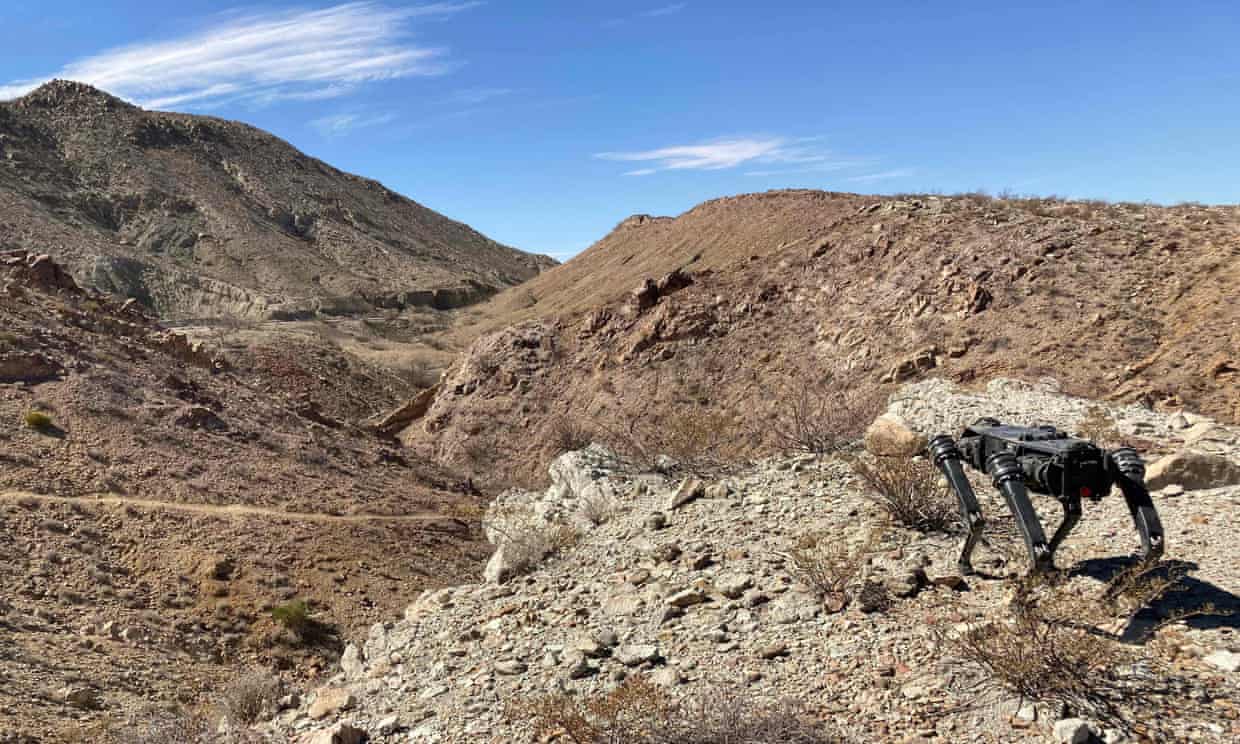Dystopian robot dogs are the latest in a long history of US-Mexico border surveillance
"...Activists have argued that the tools in use – drones and towers equipped with night vision and radar – make the region dangerous to migrants...The robot dogs would be one of many technologies deployed as part of the “smart wall”, but they aren’t limited to the border.
US police departments started trying out the devices in recent years. Massachusetts state police tested the robot dogs in 2019. Police in Honolulu used the same model to remotely screen its unhoused citizens for Covid and scan their temperatures.
Police have used robots for decades, usually for remote monitoring or to respond to bomb threats. But reports of robot dogs draw fierce criticism, for several reasons.
> First, they’re debuting in public amid a nationwide discussion on police power. Also, they’re expensive, ranging anywhere between $90,000 and $150,000, when many are discussing police budgeting.
> They’re equipped with a host of AI-enabled surveillance devices, alarming privacy activists, and do terribly on social media because they bear an uncanny resemblance to the world-ending machines featured in Netflix’s dystopian satire Black Mirror.
This played out last year, when the New York police department (NYPD) announced it would suspend its contract with Boston Dynamics, one of the main manufacturers of robot dogs, and return its Digidog after footage of the dog went viral on social media. John Miller, the police department’s deputy commissioner for intelligence and counter-terrorism, blamed “politics, bad information, and cheap soundbites”.
[...] The version of the robot dog potentially coming to the south-western border is particularly dystopian, recalibrating the devices to be essentially roving sentries. Each is embedded with different types of cameras (thermal, night vision, long-range) and sensors (chemical, weapons detection). DHS praised the device’s ability to cross multiple terrains – including sand, rocks and hills – and its durability in high heat and cramped spaces.
DHS’ choice of vendor sparked additional concern. While most police departments leased their pups from Boston Dynamics, which forbids customers weaponizing any of their tech, DHS chose Philadelphia-based Ghost Robotics. Late last year, the company debuted a version of its robot dogs equipped with long-range guns capable of hitting targets at a reported 1,200 meters.
> DHS’s oddly cheery blogpost also implied the robots would be used beyond the border itself, including “towns, cities, or ports’’ where DHS agents might encounter dangerous conditions. Federal officials have increased authority to stop and search civilians within 100 miles of the border, despite fourth amendment protections against arbitrary or excessive stops and seizures.
A 2019 report from the Electronic Frontiers Foundation tracked the surveillance devices used in border towns across the US, including facial recognition, military drones, cell-site simulators, license plate readers, body cameras and facial recognition. . ."
READ more .. https://www.theguardian.com/us-news/2022/feb/16/robot-dogs-us-mexico-border-surveillance-technology



No comments:
Post a Comment